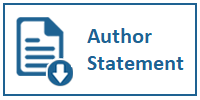Communication Barriers between Parents and Teachers Marie Joseph School in the Age of Distance Learning
DOI:
https://doi.org/10.31937/ultimacomm.v14i2.2508Abstract
Pandemic brought a very significant learning change. All levels of education are urged to transform and adapt to the distance learning process. Learning takes place through technology-based platforms, such as Google Classroom, Zoom, Microsoft Teams, WebEx and so on. Changes in the learning system affect many aspects, especially communication. Communication between schools and students changes from face-to-face communication to virtual communication. During this distance learning, parents increasingly play a role in assisting the child's learning process. In this case, effective communication becomes a very important aspect. Unfortunately, one of the challenges in this distance learning period is the miscommunication that occurs between students, parents and teachers. The Research Methods is a comparative research method with a questionnaire instrument. The study was conducted at the Marie Joseph School in South Jakarta, Indonesia and focused on communication barriers between parents and teachers at the kindergarten and elementary school levels. The result shows communication barriers between parents-teachers and vice versa in Marie Joseph School is not found. So, we recommend that the Blended Learning program can be applied at the Marie Joseph School. Distance learning with face-to-face meetings can be combined into blended learning and schools can also form a Parent's Committee with measurable programs such as Parents Community Gathering & Discussion.
Keywords: communication, effective communication, communication barriers, distance learning, Covid-19
Downloads
Downloads
Published
How to Cite
Issue
Section
License
Ultimacomm Jurnal Ilmu Komunikasi allows readers to read, download, copy, distribute, print, search, or link to its articles' full texts and allows readers to use them for any other lawful purpose. The journal allows the author(s) to hold the copyright without restrictions. Finally, the journal allows the author(s) to retain publishing rights without restrictions
1. Authors are allowed to archive their submitted article in an open access repository
2. Authors are allowed to archive the final published article in an open access repository with an acknowledgment of its initial publication in this journal














